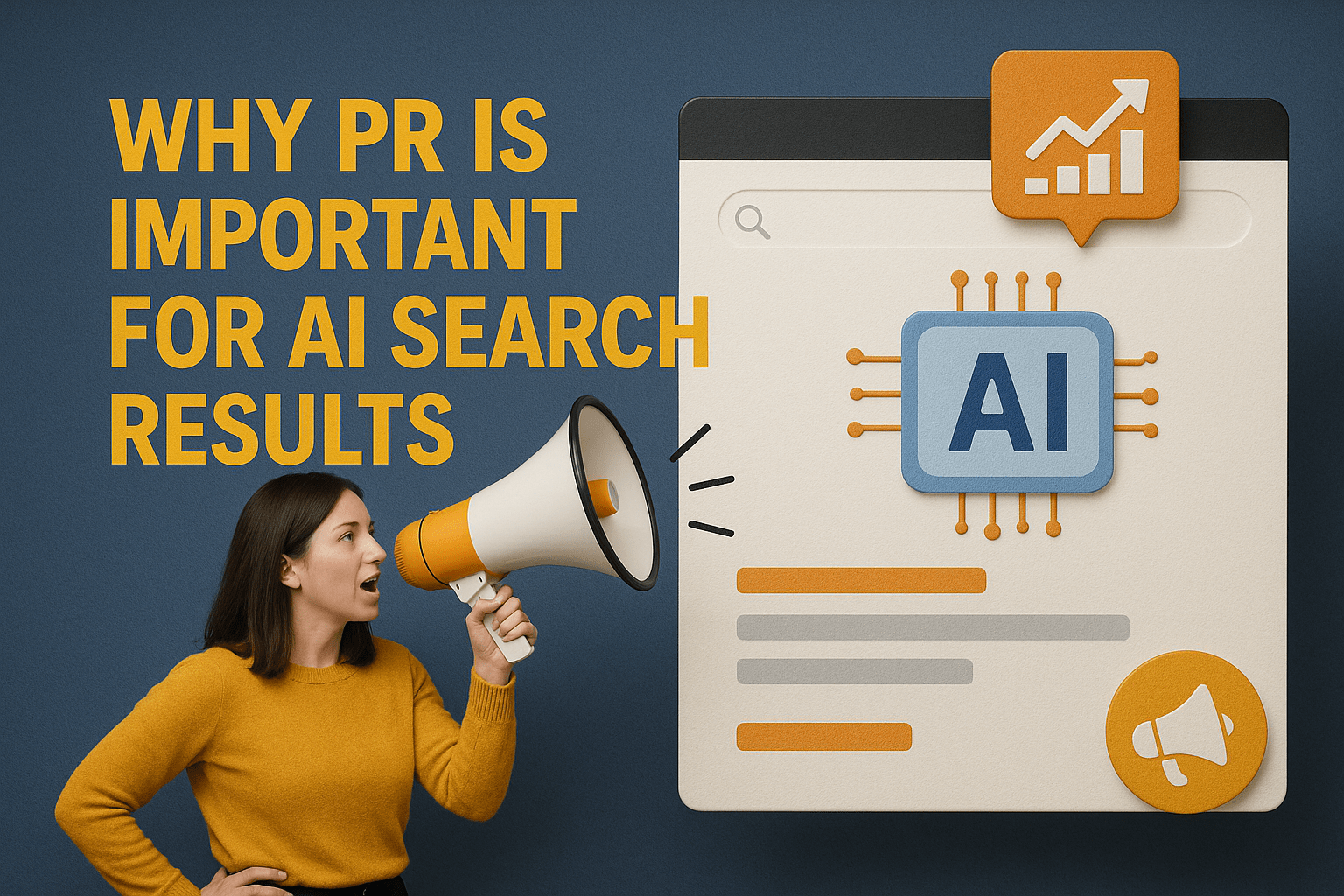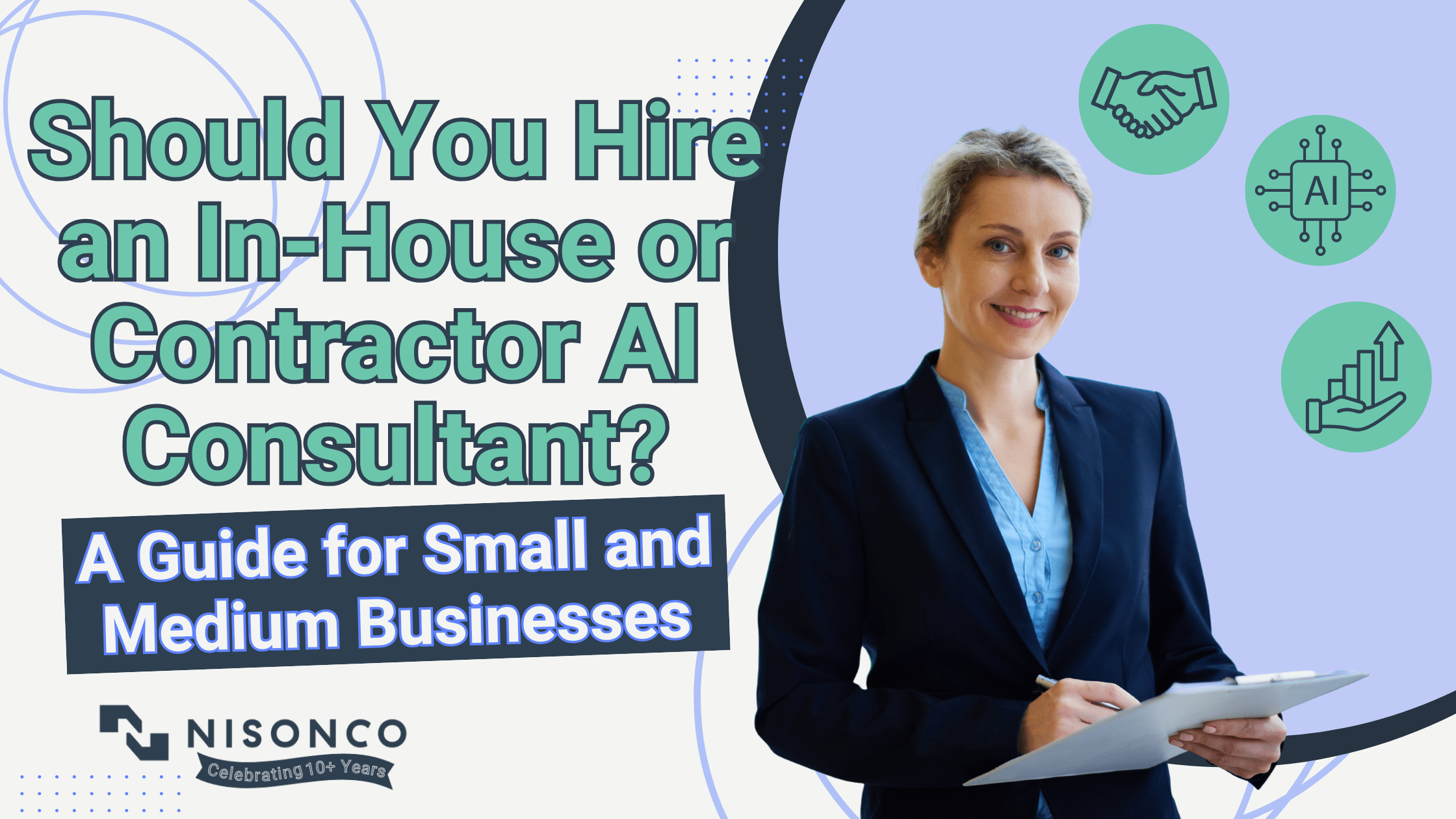Get Your Brand in Front of AI Search Engines
Building AI search visibility requires a strategic approach to earned media. NisonCo’s PR team specializes in securing the high-authority placements that AI systems trust and cite. Contact us for a free consultation to learn how we can position your brand as an industry authority.
How AI Search Changed the Game
Traditional search engines worked like digital librarians, pointing you toward relevant websites and letting you do the research. AI-powered search works more like a knowledgeable assistant who reads multiple sources, synthesizes the information, and delivers a single comprehensive answer.
This creates what experts call the “zero-click” problem. When users get their answer directly on the search results page, they have little reason to click through to any website. Studies show that AI Overviews can reduce click-through rates for top-ranking pages by up to 34.5%. For businesses that built their marketing around driving website traffic, this is a fundamental disruption.
But here’s what many brands miss: you can still win in this new environment. You just need to shift your goal from earning clicks to earning citations. When an AI mentions your brand, quotes your expert, or references your product in its answer, you’ve achieved something potentially more valuable than a website visit—you’ve been validated by what users increasingly see as a trusted, objective source.
Why AI Systems Trust Third-Party Sources Over Brand Websites
AI search relies on a technology framework called Retrieval-Augmented Generation (RAG). When you ask a question, the system doesn’t just generate an answer from its training data. It actively searches for current, relevant information from across the web, then uses that retrieved content to ground its response in factual, up-to-date information.
The key question becomes: which sources does the AI trust enough to retrieve and cite? The answer has massive implications for your marketing strategy.
AI systems are explicitly programmed to prioritize content that demonstrates independent validation. A news article about your company carries more algorithmic weight than your own website’s “About Us” page. An expert interview in an industry publication is valued more highly than your blog post. A detailed customer review matters more than your product description.
This isn’t bias—it’s intentional design. Because AI language models can “hallucinate” (confidently state false information), the RAG framework was developed specifically to ground answers in verifiable, third-party sources. The system is essentially asking: “What do independent, credible sources say about this topic?” PR is the discipline dedicated to creating exactly that type of content.
Building Entity Authority Through Strategic Media Placements
Modern search engines don’t just index keywords anymore. They build conceptual maps of “entities”—distinct people, places, organizations, and concepts they can uniquely identify and understand. Your brand’s entity strength determines how well AI systems understand who you are and what you do.
Think of it this way: when someone searches for information related to your industry, is your brand a well-defined entity in the AI’s knowledge map, or just a vague name it’s encountered a few times? Entity strength is built through consistent mentions across diverse, authoritative sources. Each earned media placement adds another data point that helps the AI understand your brand’s attributes, expertise, and reputation.
NisonCo has seen this play out repeatedly with our cannabis industry clients. A dispensary with extensive media coverage, expert commentary in trade publications, and consistent community engagement becomes a strong entity. When users search for “best dispensaries in [city],” the AI has enough third-party information to confidently cite that business. A competitor with a beautiful website but no PR presence can remain invisible in AI-generated answers.
Strategic PR also solidifies your presence in structured knowledge bases like Wikipedia and Wikidata, which AI systems treat as authoritative reference points. A well-sourced Wikipedia page functions as a definitive third-party summary that AI models heavily rely on when generating answers about your brand or industry.
The LinkedIn-OpenAI Strategy: When PR Becomes Data Placement
A sophisticated example of PR’s new role comes from LinkedIn’s promotion of their “Top Colleges” list. The PR team specifically targeted Town & Country magazine, not just because of audience fit, but because they knew Hearst (the publisher’s parent company) had a content partnership with OpenAI.
They correctly predicted that a story placed in that outlet would be ingested directly into AI training and retrieval datasets. This wasn’t traditional media relations—it was strategic data placement designed to ensure LinkedIn’s content would appear prominently in relevant AI search results for years to come.
This represents a fundamental shift in how we should value earned media. A news story is no longer just a moment of visibility that decays over time. It’s now a permanent, machine-readable asset that becomes part of the information ecosystem AI systems continuously reference. Every high-quality media placement has compounding value because AI models tend to repeatedly cite sources they’ve previously identified as reliable.
What This Means for Emerging Industry Brands
For businesses in cannabis, psychedelics, crypto, and other emerging sectors, the PR imperative for AI visibility is even more critical. These industries face unique challenges that make owned media less effective and earned media more essential.
Many advertising and marketing channels remain restricted or heavily regulated for cannabis businesses. Your ability to run traditional digital ads is limited, and major platforms often restrict content. This makes organic visibility through search even more important—and that visibility now depends heavily on AI citation.
Emerging industries also face a credibility challenge. There’s misinformation, stigma, and legitimate public concern about new markets. When an AI system synthesizes information about cannabis or psychedelics, it will prioritize sources it deems authoritative and objective. Third-party news coverage, expert analysis from recognized publications, and peer-reviewed research carry far more weight than brand-generated content.
As the world’s oldest cannabis PR firm with over a decade of experience, NisonCo has built relationships with thousands of journalists and established our clients as go-to sources for reporters covering these industries. These relationships create the steady stream of earned media that builds AI visibility over time.
From Traffic to Citations: The New PR Metrics That Matter
Traditional PR measurement focused heavily on metrics like media impressions, website referral traffic, and estimated advertising value. These metrics are becoming less relevant in the AI search era. A case study from the fashion industry illustrates why: one apparel brand lost nearly 42% of its organic traffic in a single month after AI Overviews launched, despite being quoted in the AI summaries themselves. The brand was being used and seen but not visited.
This forces us to rethink how we measure PR success. The new KPIs focus on presence, prominence, and perception within AI-generated content:
– Share of AI Voice – How often does your brand appear in AI answers compared to competitors? Track the frequency of brand mentions across a defined set of industry-related queries on major AI platforms. NisonCo has developed our own propriety system to track this for clients.
– Citation Prominence – Position matters. Being the first brand mentioned in an AI-generated recommendation carries significantly more weight than being listed last.
– Source Authority – Not all citations are equal. Being cited from a Wall Street Journal article is more valuable than being mentioned on an obscure forum, and tracking this distinction provides nuanced insight into your PR program’s quality.
– Sentiment of AI Mentions – Use sentiment analysis tools to evaluate whether the language used to describe your brand in AI answers is positive, neutral, or negative.
– Assisted Conversions & Branded Search Uplift – While users may not click immediately, AI visibility drives brand awareness that leads to later direct searches and conversions. Track correlations between AI citations and downstream branded search volume.
These metrics represent a shift from measuring direct actions (clicks) to measuring indirect influence (authority and recall). NisonCo helps clients implement tracking systems for these new KPIs, providing clear reporting that demonstrates the business impact of PR in the AI search era.
See How Your Brand Appears in AI Search
Understanding your current AI visibility is the first step toward improving it. Our team can conduct a comprehensive audit of how your brand appears across major AI platforms and identify opportunities for improvement. Request your AI visibility audit today.
Practical Strategies: What Effective PR for AI Visibility Looks Like
Building AI search visibility through PR requires a strategic, multi-platform approach. Here’s what effective execution looks like:
Target High-Authority Publications. Secure coverage in top-tier national news outlets, respected industry trade publications, and influential blogs. These sources are consistently prioritized by AI models as credible and editorially vetted. For example, for cannabis brands this means placements in both mainstream media and respected industry publications like MJBizDaily or Marijuana Moment.
Engage Community and Q&A Platforms. AI systems like ChatGPT heavily cite user-generated content from Reddit and Quora. These forums are seen as sources of authentic, real-world perspectives. Strategic, expert-level participation in relevant subreddit discussions (without being promotional) can directly influence AI summaries.
Optimize Review Platforms. AI Overviews frequently synthesize sentiment and specific details from customer reviews to summarize a business’s reputation. Encouraging satisfied customers to leave detailed, context-rich reviews on Google Business Profile and industry-specific platforms creates powerful trust signals.
Cultivate Expert Voices. AI models increasingly recognize and prioritize content attributed to named, credible experts. Build the public profiles of your company’s subject matter experts through thought leadership articles, expert commentary in news stories, and consistent presence on professional platforms like LinkedIn. Being quoted as an expert in third-party articles is a powerful authority signal that helps AI systems recognize your team members as trusted sources.
Structure Content for Machine Readability. Every piece of content—from press releases to blog posts—should be formatted for easy AI extraction. Use clear heading hierarchies, bulleted lists, quotable statistics, and schema markup to help AI systems identify and extract key information.
NisonCo’s integrated approach combines our PR team’s media relationships with our SEO team’s technical expertise and our content team’s strategic messaging. .
The Ethical Dimension: Why Responsible PR Matters More Than Ever
As PR professionals create the content that AI models learn from and retrieve, we’re not just communicating with the public—we’re participating in training the systems that will shape future information discovery. This elevated role demands rigorous ethical standards.
The line between ethical optimization and manipulative practices can be subtle. Creating fake review sites, using AI to generate spammy articles on third-party domains, or deliberately hiding negative information crosses into deceptive territory that undermines the entire search ecosystem. If users lose trust in AI-generated answers because they perceive them as manipulated marketing content, the value of being cited collapses entirely.
NisonCo’s approach is grounded in the principle that the most sustainable strategy is providing genuinely helpful, accurate, and authoritative information. We fact-check, present balanced perspectives, and advocate for our clients’ interests through truthful, contextualized storytelling.
This ethical approach isn’t just about values—it’s strategic. AI systems are increasingly sophisticated at detecting manipulation and rewarding authentic authority. Brands that build their AI visibility on a foundation of genuine expertise and third-party validation will have durable, defensible visibility. Those that try to game the system with inauthentic tactics will find their citations disappear as AI platforms refine their trust algorithms.
Ready to Build Your AI Search Visibility?
The shift from traditional search to AI-powered answers isn’t coming—it’s already here. Every day your brand isn’t actively building its citation presence is a day your competitors can get ahead. The businesses that will succeed in this new environment are those that recognize PR isn’t supplementary to their search strategy—it is their search strategy.
NisonCo has over a decade of experience and has built relationships with thousands of journalists and established our clients as authoritative voices in their sectors. Our integrated approach combines strategic media relations with technical SEO knowledge and AI optimization expertise to build the diverse, high-authority footprint that AI systems trust and cite.
Whether you’re a start up, established business, or cannabis dispensary looking to dominate local AI search results, we can help you develop a PR strategy specifically designed for AI visibility.
The future of search is here, and it requires a new approach. We’re ready to help you adapt and win.
Contact NisonCo today to discuss how our PR, SEO, and content services can position your brand as an authority in AI search results.



